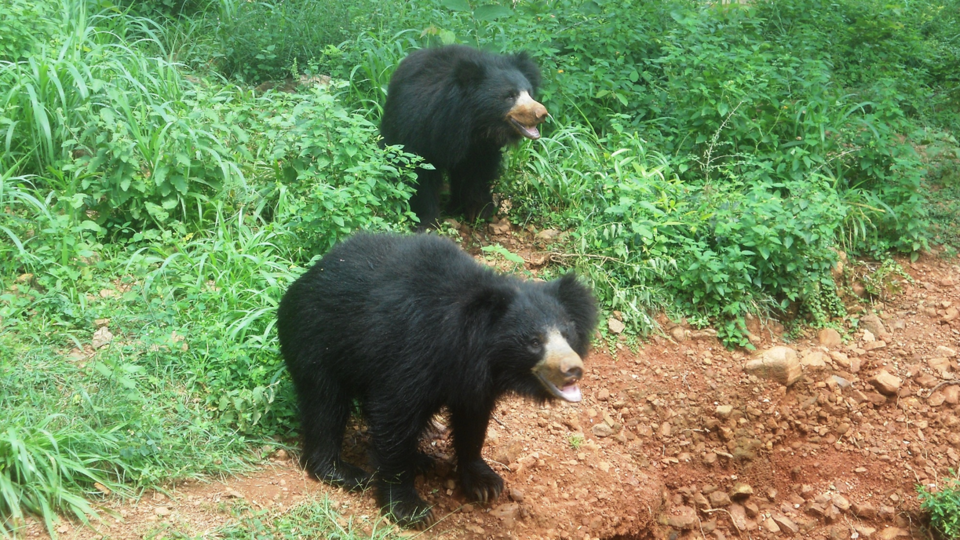Science News
Protecting Sloth Bear Diversity

Charismatic large mammals capture the imagination and fascination of scientists, adventurers, and tourists alike. But if you think they’re easy to study, think again. Large mammals often cover large territories, so they can have enormous ranges. They also don’t necessarily want to be found—by humans or other potential predators—so they may camouflage themselves or travel under cover of night.
This is true of sloth bears (Melursus ursinus) in India. The 18th-century scientists who discovered this species thought they were related to sloths (hence the name). But we now know they’re related to brown bears. Sloth bears are lankier than their relatives, have a mane, and can reach nearly two meters (six feet) and weigh up to 180 kilograms (400 pounds). Not so easy to hide at that size, right? These bears are nocturnal and feed on insects as well as seasonal fruits and flowers.
But little is actually known about these large mammals. There appear to be fewer than 20,000 individuals in both India and Sri Lanka, a population dwindling due to human activities over the past century. The IUCN has listed the sloth bear as vulnerable, but conservation organizations need more information about the numbers of bears, their locations, and their health to guide protection efforts.
Enter Trishna Dutta, a scientist with the Smithsonian Conservation Biology Institute. She studies the movement, genetics, and gene flow of large mammals in her native India. Her work has revolved around big cats such as leopards and tigers, so why not add sloth bears to that list—especially since the data are lacking and sorely needed?
Dutta and her colleagues knew that many sloth bears frequent the tiger reserves in the Satpura-Maikal landscape of Central India. But they wondered if the populations from each reserve were isolated, or if some animals traveled to other reserves and intermingled. When a species has such a low number of individuals like the sloth bears do, scientists worry that low genetic diversity will make populations more vulnerable to genetic defects and diseases.
To collect genetic samples from the bears, the scientists surveyed over 15,000 kilometers (more than 9,000 miles) in the area—covering four tiger reserves and the land in between. The team wasn’t looking for bears, but rather bear scat and hair, which provides genetic material. And they found it! Across the four reserves and along a corridor between two of them, the scientists collected four hair samples and 190 scat samples. That’s a lot of poop!
From all the samples, the team identified 55 individuals. And, as the team positively reports today in PLoS ONE, the “results show that sloth bears in this landscape have moderate levels of genetic diversity… These results show that sloth bears in this landscape are moving from one population to another and effectively breeding in the recipient population, thus maintaining genetic exchange and preventing further genetic subdivision in this landscape.”
In this study, Dutta and her colleagues emphasize that corridors and habitat connectivity between protected areas are crucial for the health of remaining sloth bears. They list ongoing threats to these corridors—coal mining, highway and railway expansion, and teak plantations—and stress the need to protect these areas as well. The team writes, “Our study calls for immediate policy intervention for conservation planning to maintain linkages between protected areas in this landscape.”
In other words, we’d better not be slothful in addressing these issues!
Image: Adityamadhav83/Wikipedia